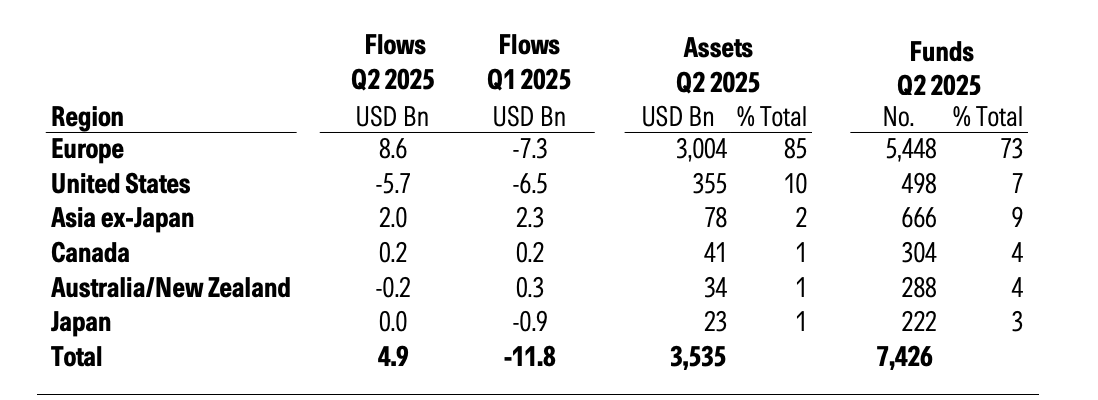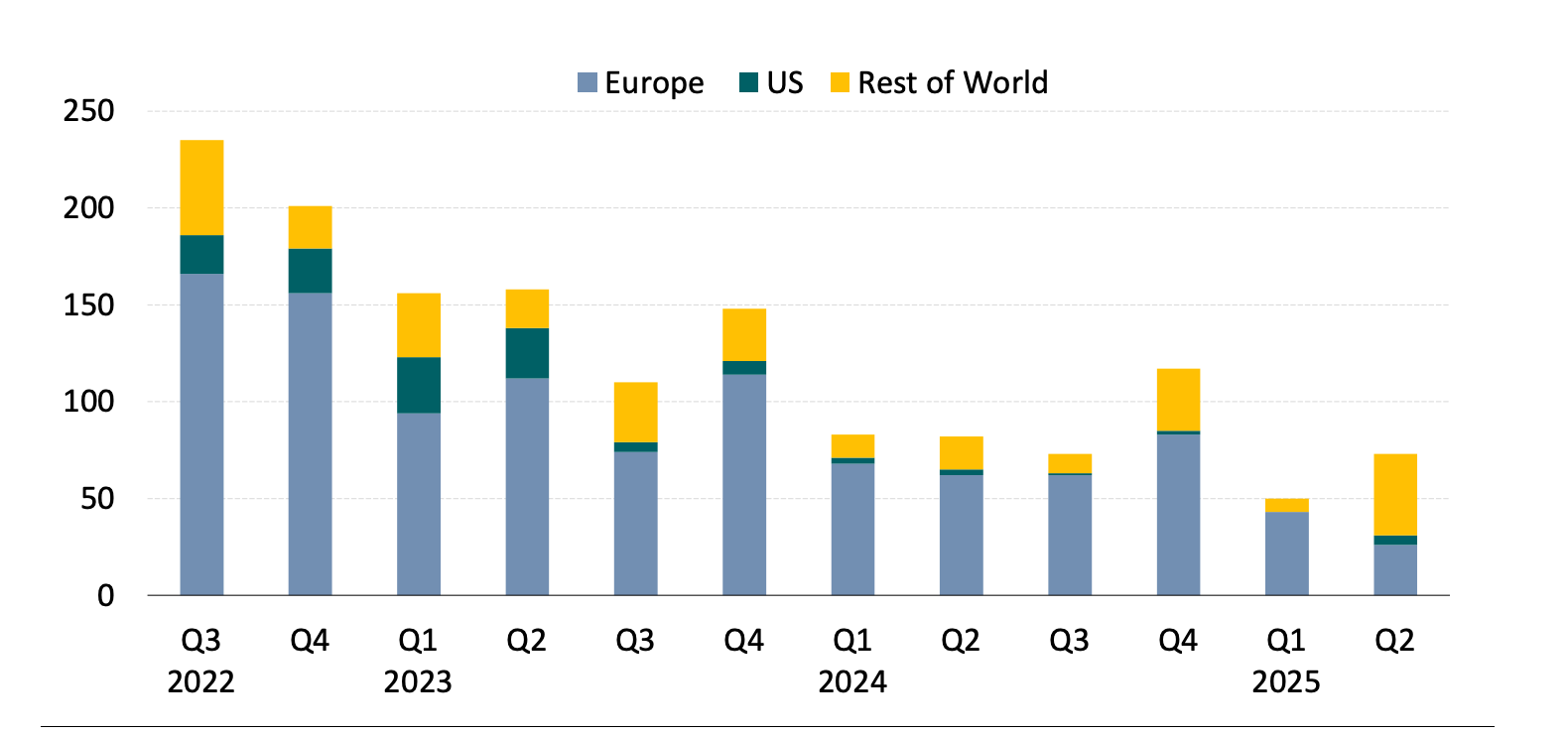7 min read
Global Sustainable Fund Flows: Q2 2025 in Review
Net inflows hit $4.9 billion after record outflows in Q1, driven by a European recovery and resilient market performance despite geopolitical headwinds.

Key Takeaways
Global Sustainable Fund Statistics

Source: Morningstar Direct. Data as of June 2025, excluding money market funds, funds of funds, and feeder funds. For Canada and the US, the number of funds includes funds of funds and feeder funds (these are, however, excluded from flow and asset calculations). For Japan and South Korea, the number of funds, flows, and assets includes funds of funds and feeder funds.
Global Assets Edge Higher to USD 3.5 Trillion in an Up Market
Quarterly Global Sustainable Fund Assets (USD Billion)
.png?format=webp&auto=webp&disable=upscale)
Source: Morningstar Direct. Data as of June 2025.
European Sustainable Fund Flows Recover
European Sustainable Fund Flows (USD Billion)
.png?format=webp&auto=webp&disable=upscale)
Source: Morningstar Direct. Data as of June 2025.
Global Sustainable Fund Launches
Global Sustainable Fund Launches Per Quarter

Source: Morningstar Direct. Data as of June 2025.